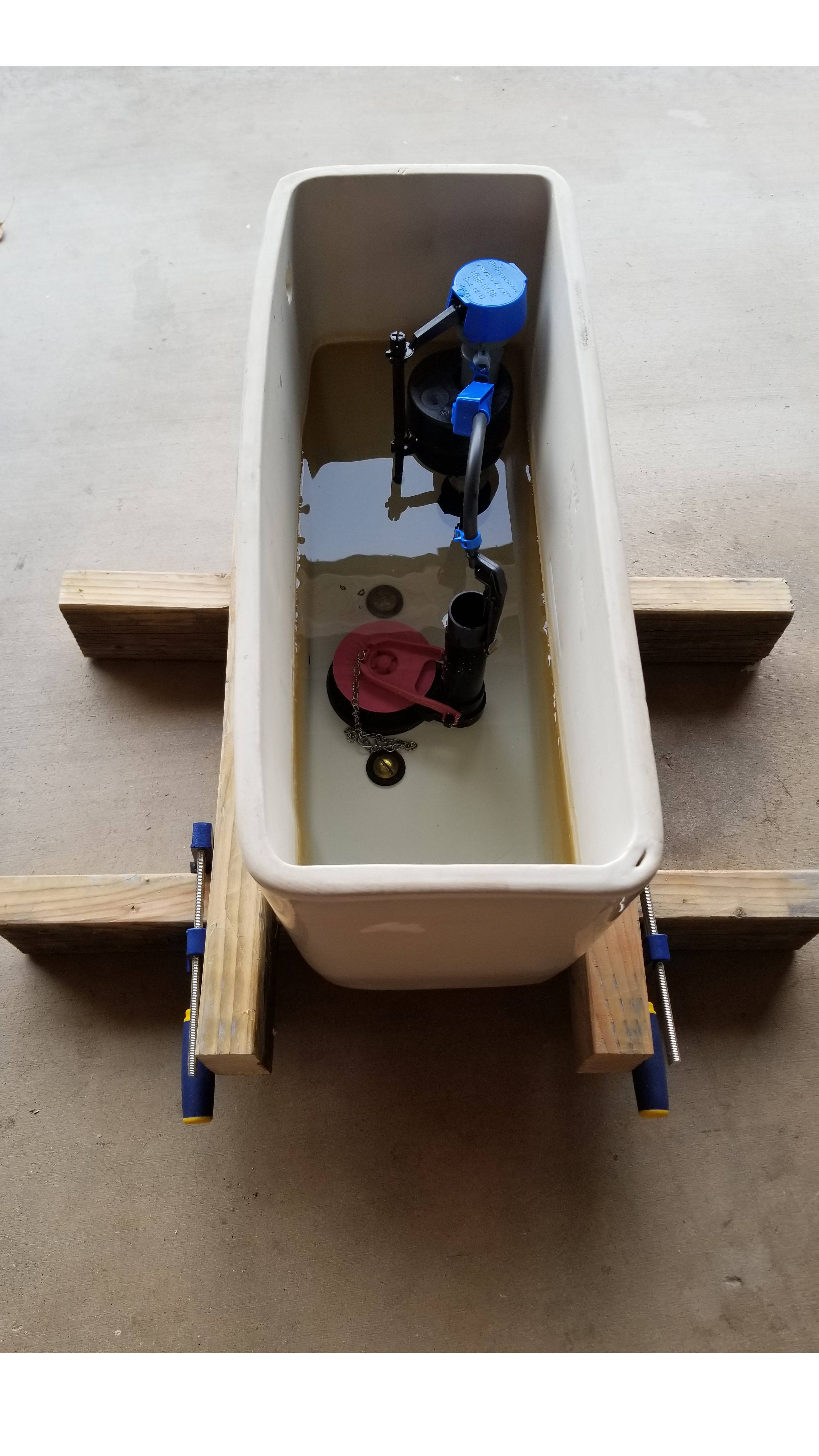I have a toilet tank that's slowly leaking into the bowl causing it to refill periodically. I can rule out the fill valve having loose grit/obstructions causing it to fill slowly after it should have shut off.
The leak has to be one or more of the following:
- flapper
- bolts and corresponding rubber gaskets
- flush valve gasket/nut
Here's a photograph of the tank:
I don't know if the flapper is leaking or one of the bolts or flush valve gasket. I was pretty sure that I had a waterproof seal on the bolts and flush valve because before I remounted the tank to the bowl I filled the tank with enough water to see if it any of those were leaking. (It leaked a bit at the flush nut before I carefully tightened the flush valve nut a quarter turn beyond hand-tight).
If the problem is with the flapper I probably won't need to pull the tank back off to fix. Otherwise I'm doomed to that again.
I've thought that if I tested the tank by filling with just enough water to cover the bolt heads/portion of flush valve below the flapper, I could see if it leaked. If not, then it would probably be the flapper.
Any other idea to figure out where the leak is without pulling the tank? Putting a dye in the tank won't help because the two bolt connections as well as the flush valve all drain into the bowl flange, so I'd see the leak as color in the bowl in any case.
EDIT: I wanted to add some information and correct some of my misunderstandings in the question I'd posted. Also, I think I have the fix for my case and will try to post a separate solution.
I think the toilet bowl I have is pretty typical. Here's what the tank connects to:
My belief that a leak in either bolt connection would leak into the larger hole and end up in the bowl is incorrect, especially with the gasket covering the flush valve nut. It is the case that correcting a leak from the bolts or the flush valve hole involves removing the tank.
I thought it was being smart when I had tested the tank with its new valves for leaks before reinstalling it on the bowl. What I didn't realize is that I did it wrong. The amount of water I used for the test (just covering the bolt holes) didn't cause enough pressure to test that the flush valve didn't leak. Later, testing with water up to the water line in the tank caused significant leakage around the flush valve.
An additional note is that I'd done a recent overhaul of the tank, both the fill and flush valves (using a kit containing both parts). So the tightening of the flush valve nut was something I'd done recently and not from the previous setup.





